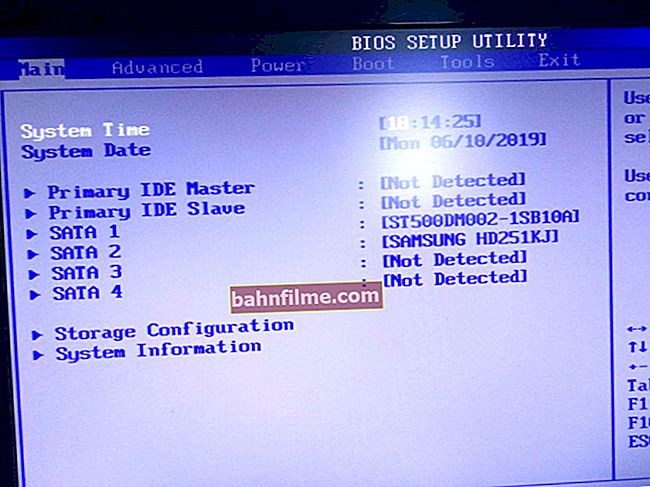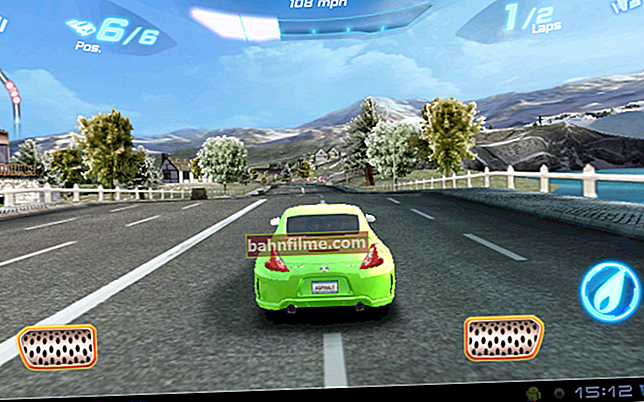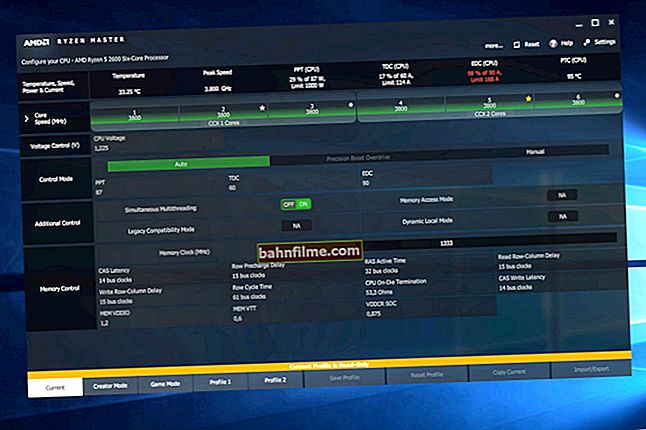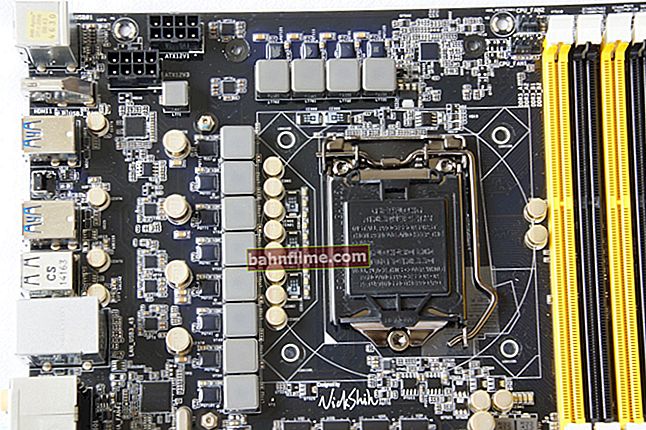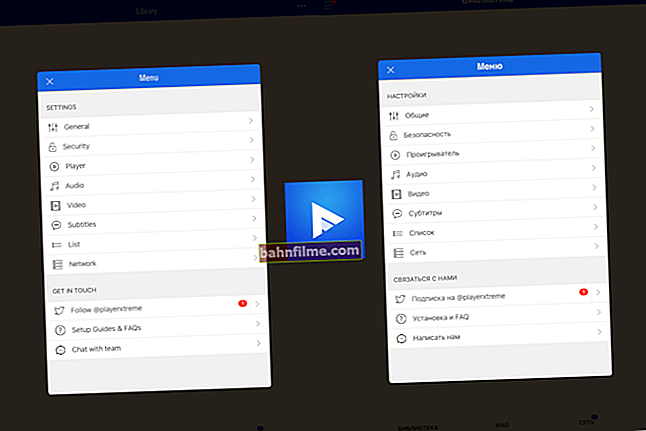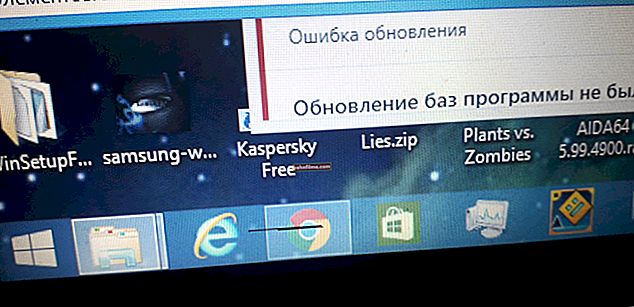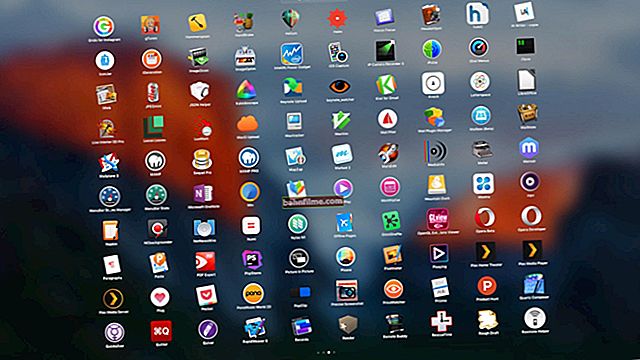 Good times of the day!
Good times of the day!
If there are no problems with a regular keyboard for a PC - it broke down, I bought a new one, but with laptops it is far from so simple:
- firstly, in some cases it is quite difficult to find it;
- secondly, it is not easy to change it yourself (sometimes you need to disassemble the entire device);
- thirdly, the inoperability of some keys is not always associated with a malfunction (but on this many users get burned ...)!
- fourthly, the laptop keyboard often "bites" at the price (it costs much more).
Actually, in this article I want to give some not entirely obvious reasons why the keys may stop working. In addition, it is not always worthwhile to immediately run for a new keyboard - agree, if 1-2 keys do not work for you (which are not so often used), then it is quite possible to do without them?
In general, in this article I will give different options for reasons, solutions, and what can be done in general if you are faced with this problem.
So...
*
What to do if some keys do not work for you
Testing all keys under a different OS
To begin with, I would like to recommend thoroughly testing all keyboard buttons using one handy utility - the Keyboard test utility. Simply, it may be that you only know about one key, and 2-3 more do not work for you (and the problem may be of a programmatic nature)!
The utility is extremely simple (it does not need installation): after launching it, you will see a window with a keyboard (👇). When you press any key, it will be filled with yellow color.
Your task is to flip all the keys!

Keyboard Test Utility - the main window of the utility
Of course, in order to dot the "AND" - we need to create an emergency LiveCD-flash drive (and write the Keyboard Test Utility on it as well).
Next, boot from this flash drive, and run a keyboard test (thanks to this simple test - we will make sure that the keyboard's inoperability is not related to errors in the current version of Windows ...).
👉 To help!
Windows disaster recovery LiveCD - my pick of the best products

Keyboard test utility launched from LiveCD
*
Are the keys disabled in BIOS (relevant for FN, F1 ÷ F12)
If the function keys (F1 ÷ F12) do not work for you, or special. FN key - it is possible that the problem lies not in the keys themselves, but in the BIOS settings (UEFI).
By the way, I note that by default on many laptops the function keys are disabled. (instead of them, excellent functions are performed: volume up, Wi-Fi on / off, screen brightness adjustment, etc.) .
As a rule, you need to enter the BIOS and change the operating mode of the functional. keys (the parameter name is something like "Hotkey Mode", as in the screenshot below).
👉 To help!
How to enter BIOS / UEFI - my beginner's guide

Hotkey Mode - changed mode of operation of F1-F12 keys
In addition, please note that do you have drivers installed and specialized software from your laptop manufacturer. For automatic driver updates, I have long recommended 👉 this list of utilities.
*
👉 To help!

Why Fn and function keys F1 ÷ F12 may not work on a laptop (solution to the problem)
By the way, if you have a regular PC keyboard, then pay attention to the special keysF Lock orF Mode (eg). They do not occur very often, but still ...
Using them, you can turn off the function keys (next to them, usually, there is an LED, example below).

F Lock key (most often found on expensive keyboards)
*
Garbage under the keys (dust, crumbs, hair)
The most common cause of poor response on most keys is debris and dust that accumulates underneath over time.
A characteristic feature in this case: when pressed weakly, the key does not work, however, when pressed with some effort, the key works. Although, of course, a lot depends on the design of the keyboard itself (some are specially protected, and generally do not have such a problem).
In any case, from time to time I recommend cleaning the keyboard from debris (it certainly won't be superfluous).
How can you clean your keyboard:
- method number 1: use cans of compressed air, which are sold in most computer stores (or a regular vacuum cleaner, turning on the reverse mode). Most of the dust and crumbs from the keys can be removed with this simple "blowing" method.

Compressed air can
- Method number 2: now in many stores (for example, Chinese) specials are sold. vacuum cleaners for cleaning the keyboard. It is also a very good and convenient tool (for an example of such a device, see the photo below 👇).

USB keyboard vacuum cleaner
- Method number 3: also in many stores now there are "spreading" Velcro. The principle of working with it is quite simple: first you put it on the keyboard, slightly press down - it spreads and fills all the voids between the keys, all dust and debris stick to it. Then unhook it along with the debris.

Velcro for cleaning the keyboard
- Method number 4: if you have a regular keyboard (not a laptop), then you can simply turn it over and lightly tap on it, shake it. Even this method helps to "knock out" a lot of unnecessary things from her ...
- Method number 5: if you are a little familiar with the technique, then you can try to disassemble it and blow it out from the inside, manually wipe and clean everything (Note that the operation requires some experience; do it at your own peril and risk) .
*
Wear and acidification of the tracks (especially important when the keyboard is flooded)
For reference!
Conventionally, the keyboards can be "split" into 2 camps:
- membrane: which uses thin films with tracks);
- mechanical: where each individual button is a "button".
The most common keyboards are membrane type (about 90% -95% on the market). They are cheaper and lighter (which is especially true for laptops).
So herewhatever the keyboard is - it is designed for a certain number of clicks (as a rule, several tens of thousands - this is several years, even with active use).
Over time, the conductive tracks acidify, the thin contacts closing the tracks wear out, and the dust also does its job.
By the way!
The process of "acidification" of conductive tracks is accelerated hundreds of times if you spill some liquid on the keyboard. Which, by the way, is not so rare, experts abroad considered that every 100th circle above the keyboard falls over on it ...

Membrane keyboard (as an example, so that it is clear what is at stake).
In case of problems with the old keyboard (or with some kind of liquid filled in), I can advise the following recipe (he does not guarantee recovery, and you do everything on it at your own peril and risk. However, to revive several keyboards for a while, he helped me) :
- first remove (disconnect) the keyboard from the laptop (from the PC);
- if the keyboard has been covered with some kind of liquid (lemonade, tea, etc.): rinse it well in warm water and detergent (for example, Fairy) and let it dry. Plug it back in and see if it works fine;
- if the option did not help, you will have to completely disassemble the keyboard and wipe the film with tracks and the elastic membrane with ethyl alcohol.
- pay attention to the condition of the tracks: if there is somewhere suspicion that they are "worn out" or damaged, they must be treated with conductive glue (it would not be superfluous to "ring" the track to determine whether it conducts a "signal" / current); or just accept and buy a new one ...
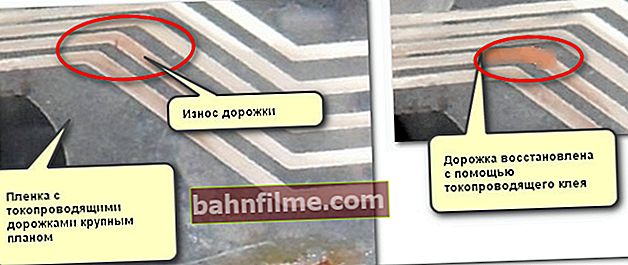
Example of repairing keyboard tracks
- Although the method is "collective farm", it sometimes helps to restore the keyboard.By the way, it is only suitable for membrane type keyboards.
*
How to do without some buttons
It is not always possible to replace the keyboard: sometimes there is no money, quite often many get so used to their keyboard that they simply do not want to change it to any other. As for laptops, it may become so that the right keyboard for your model may not be found ...
But in many cases, you can do without non-working keys (especially if there are only 1 ÷ 2 of them). The most popular ways of this "workaround" are given below ...
*
You can reassign one key to another
The most common option is to use special utilities that can replace pressing one key by pressing another. It sounds a little "strange", but the principle is:
- for example, the "Z" key does not work for you;
- you set the "Ctrl" key together with it;
- now when you press "Ctrl" - "Z" will be triggered (note that you can reassign almost any buttons to each other).
👉 Instructions to help!

How to reassign one key to another (for those who do not have a button press on the keyboard)

MapKeyboard: just three steps to replace a key (clickable!)
I am personally impressed by the MapKeyboard utility - simple, free, reliable. The principle of working with it is very simple: first, indicate which button you want to use instead of the disabled one; then indicate not working and save the settings. After rebooting the PC / laptop - the "job" is done, the key will be replaced (the screen is just above).
*
You can connect an additional keyboard
Just like with a PC, you can connect a regular keyboard to any laptop (most often a classic USB keyboard is used). As a rule, there are no problems with configuration: the keyboard becomes available for operation immediately after connection.
👉 To help!
How to connect a wireless keyboard to a computer and phone (including Bluetooth version)

As an example (a USB keyboard is connected to the laptop)
*
You can use the virtual keyboard
Not everyone knows that Windows has a virtual (software) keyboard that you can click with the mouse cursor. Something like the one that appears on Android devices when you access a text block.
To call up such a virtual keyboard, 👉 open the Windows Control Panel, and go to the next section: Control Panel \ Accessibility \ Ease of Access Center ... There will be a link to launch it (see screen below).

Enable On-Screen Keyboard
The keyboard looks pretty good, the buttons are large and comfortable. It can be quite used when filling in small text fields, when the main keyboard does not allow this.

Screenshot of on-screen keyboard operation
👉 Addition!
 By the way, in some cases (for example, when a certain key does not work, say Print Screen to create screenshots) - in most modern applications, you can easily change the default hotkeys to those you need (i.e. there was a Print Screen to create a screen - became the combination Ctrl + Shift).
By the way, in some cases (for example, when a certain key does not work, say Print Screen to create screenshots) - in most modern applications, you can easily change the default hotkeys to those you need (i.e. there was a Print Screen to create a screen - became the combination Ctrl + Shift).
*
If the problem is with the power button
Not so long ago, by the way, I received an interesting question about the non-working power button on a laptop. In general, it does not directly relate to the keyboard, but nevertheless ... I decided to indicate it in this article too 👌 ...
👉 Instructions

How to turn on a laptop without a power button and is it possible in principle ...
*
Additions and comments on the topic are welcome ...
Happy work.
👣
First published: 28.06.2018
Correction: 05/24/2020




